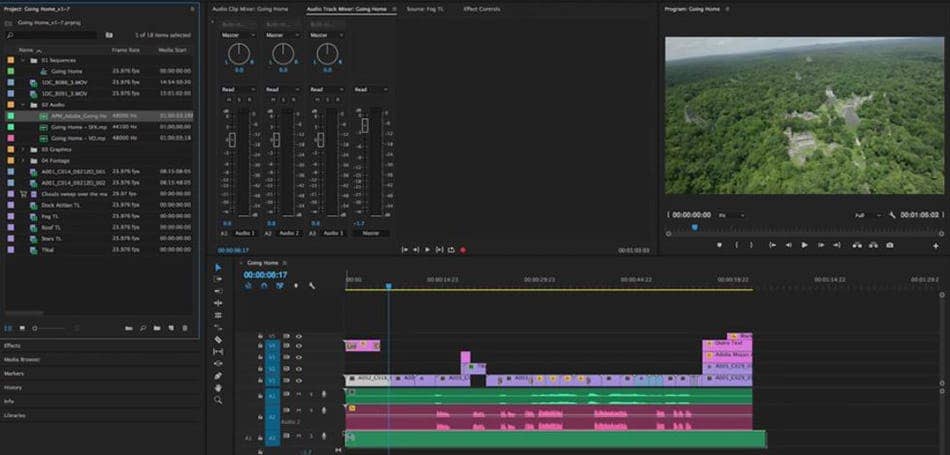

System requirements for 4K video editing
Tips for choosing the ideal PC configuration
4K resolution is standard for any form of photo and video footage. Every smartphone, screen or camera boasts unheard-of focus based on 4,096 x 2,160 pixel resolution.
When it comes to editing 4K videos, simply having a professional video editing program installed isn’t enough. The PC must also be able to cope with the large amounts of data. In this blog, we’ll take a closer look at what really matters when choosing a computer for 4K video editing.
Powerful hardware shortens waiting times
In a nutshell, the higher video files’ resolution, the more processing power is required for the video editing program to work properly. Individual PC components are put under a tremendous amount of strain during this process. Off-the-shelf computers usually have shortcomings in specific areas. To avoid long waiting times during video editing and rendering, it is important to choose a configuration that is suitable for video editing.
Most people think of powerful graphics cards in connection with a professional video editing PC. But, in reality, the graphics card plays a secondary role, since the video editing programs primarily use the processor’s processing power. Both codec-based footage compression and computationally intensive rendering are tasks undertaken by the processor.


The processor sets the pace
Today’s video editing software relies on multi-core processors. If you’d like to be on the safe side, it is important to check what the software producer recommends. Six processor cores are OK, but eight or twelve are better – especially for multitasking. If background processes are running undisturbed on another core, this is favourable for video editing performance. In addition to having as many processor cores as possible, the CPU should have a high clock speed and support hyperthreading. Hyperthreading optimises the processing of individual parts of programs. Video editing software uses the principle of hyperthreading in the sense that, while one frame is being edited, the next one is already being prepared. For multitaskers and people who spend a great deal of time rendering, hyperthreading is a promising option to improve performance. Provided, of course, that the software supports the technique.
The likes of the Intel Core i9-12900K processor from the twelfth generation is suitable. It has 14 cores and delivers a maximum clock speed of 5.0 GHz. So these processors provide a total of 14 CPU cores and 20 threads for calculations.
From AMD, the Ryzen 7 7700X or the Ryzen 9 7900X is suitable. The processors have eight and twelve cores respectively, and 16 and 24 threads respectively, which makes them ideally equipped for multitasking. Additionally, the AMD processors support PCIe 4.0, which gives SSDs in particular an advantage. In fact, selected PCIe 4.0 SSDs can read at up to 7,000 MB/s and write at up to 5,000 MB/s.
For performance-hungry users, a system on the high-end desktop platform Intel X299 or AMD TRX40 is also recommended. The TRX40 platform supports processors with up to 64 cores and 128 threads. There are also more PCIe lanes available, which can be used for SSDs, graphics cards and expansion cards.


Plenty of space for intermediate storage
Video editing places a heavy strain on the random access memory. The RAM is where a great deal of data is temporarily stored when editing 4K video footage. The more space there is, the more applications run in parallel on the computer without any interference or delay.
With 4K videos, the number of pixels has quadrupled from around 2 million in Full HD to approximately 8 million. If a PC is to edit 4K videos efficiently, 32 GB of RAM is recommended.
If you want to start with 16 GB and upgrade later as needed, it is important that you use the same memory modules from the same manufacturer for the expansion. Compatibility problems may arise if different modules are used.
Support from graphics cores
As mentioned above, the graphics card does not play first fiddle in a video editing PC. Nevertheless, the integrated graphics unit in the processor usually isn’t sufficient for 4K video editing. A separate graphics card with its own graphics memory proves helpful here, since it ensures a smooth workflow. Additionally, the graphics card relieves the strain on the processor by allowing it to outsource sub-tasks that are performed anyway while the PC is in operation to the GPU (graphics processing unit).
The graphics card must offer monitor ports for the 4K signal with a 60 Hz refresh rate. They can be DisplayPort ports from version 1.2 and HDMI ports from version 2.0. Suitable graphics cards would be the likes of the NVIDIA RTX 3050, RTX 3060 or – if you need a great deal of performance – RTX 3080. For the professional sector, a Quadro RTX graphics card is also a sensible choice.


Taking a look at the video editing program’s product description provides information about which graphics cards the application has been tested with and what the software manufacturer recommends.
Lightning-fast data access
When it comes to fast loading and rapid rendering, there is no way around flash memory. Solid-state drives (SSDs) are not only much faster at accessing data; they are virtually silent. Mechanical hard drives with their rotating discs create far more noise during heavy-duty use in video editing.
An M.2 SSD with PCIe bus for the operating system and a second SSD with increased capacity for the current project’s video data are ideal. This allows the video editing software to work smoothly. For AMD systems of the third, fifth and seventh generations, a PCIe 4.0 SSD is also recommended, since PCIe 4.0 SSDs are up to twice as fast as PCIe 3.0 SSDs. On the other hand, for archiving finished videos, you can certainly use an HDD, which offers much cheaper storage space
Stable power supply
The relevance of a high-quality power supply unit is often underestimated. Here, both the quality and the performance of the power supply is tremendously important in a video editing system.
The current flows from the socket as alternating current (which alternates between positive and negative) with 230 V into the power supply unit. The power supply unit converts the alternating current into direct current. The 230 V are distributed into different voltage ranges, so they supply the individual components separately. This increases the power supply’s stability when power requirements are high during the short term.
Setting the tone – for the editor too
Contemporary mainboards come ready-fitted with very good sound cards. For many users, this is perfectly adequate. But if you attach a great deal of importance to having a professional sound even at the video editing stage, you should opt for an additional sound card. However, this has no influence on the edited video’s sound quality, because this depends on the quality of the playing device and the audio track.
Conclusion
The most important components in a PC for professional video editing are the processor, the graphics card, the RAM and a speedy SSD. No expense should be spared here. Which processor is the ideal one to use very much depends on the video editing software’s design. So you would be well advised to follow the software developer’s recommendation. If you regularly work on extensive video projects, a system that delivers sub-standard performance will become a major drain on your valuable time.


